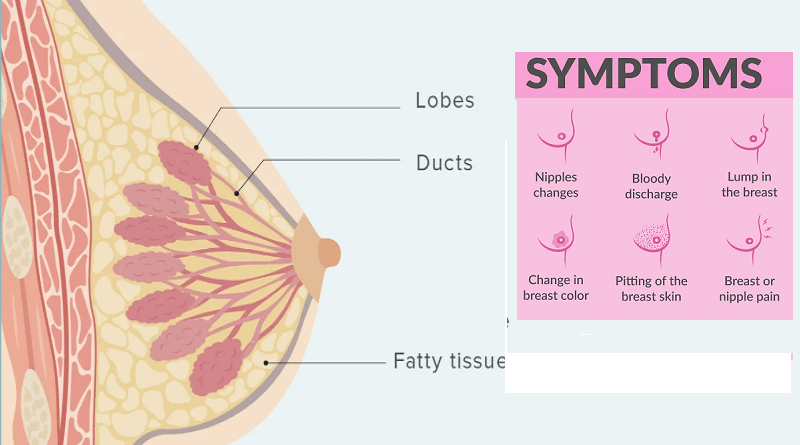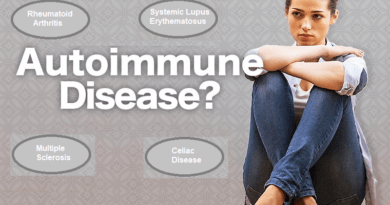Breast Cancer Comprehensive Guide: Understanding and Managing the Disease
Welcome to our comprehensive guide on breast cancer, a disease that affects millions of women worldwide. At helal medical, we are committed to providing the most accurate and up-to-date information to help you understand and manage this condition effectively. In this article, we will discuss the various aspects of breast cancer, including its causes, symptoms, diagnosis, treatment options, and preventive measures.
Understanding Breast Cancer
It is a malignant tumor that develops in the cells of the breast. It occurs when abnormal cells divide and grow uncontrollably, forming a mass or lump. It affects mainly women above the age of 50 years. It is the second most common cancer in women after skin cancer.
What are the types of breast cancer?
- Infiltrating (invasive) ductal carcinoma:
– This form of cancer originates in the milk ducts of the breast
– and penetrates the duct walls, spreading to nearby breast tissue.
– It accounts for approximately 80% of all breast cancer cases and is the most common type. - Ductal carcinoma in situ:
– Also known as Stage 0 breast cancer
– This condition involves abnormal cells confined to the milk ducts.
– Although it is considered precancerous, prompt treatment can prevent invasive growth and the spread to other tissues. - Infiltrating (invasive) lobular carcinoma:
– Occurring in the lobules of the breast responsible for milk production
– It cancer infiltrates the surrounding breast tissue. It comprises 10% to 15% of breast cancer cases. - Lobular carcinoma in situ:
This precancerous condition is characterized by abnormal cells within the lobules of the breast. While not a true cancer, it indicates an increased risk of developing breast cancer in the future. Regular clinical breast exams and mammograms are crucial for individuals with lobular carcinoma in situ. - Triple-negative breast cancer (TNBC):
Accounting for approximately 15% of cases, TNBC poses significant challenges in terms of prognosis and treatment. It is termed “triple negative” because it lacks the three markers commonly associated with other types of breast cancer. - Inflammatory breast cancer:
Rare and aggressive, this type of cancer presents with symptoms resembling an infection. Individuals with inflammatory breast cancer often experience redness, swelling, pitting, and dimpling of the breast skin. It occurs due to cancer cells obstructing the lymph vessels in the skin. - Paget’s disease of the breast:
This type affects the nipple and areola, leading to changes in the skin in those areas.
Causes:
While the exact causes of breast cancer are not fully understood, several risk factors have been identified. These include:
- Gender: Although breast cancer can occur in men, it is much more prevalent in women.
- Age: The risk of developing breast cancer increases with age, particularly after menopause.
- Family history: Having close relatives, such as a mother, sister, or daughter, who have had breast cancer, increases the risk.
- Genetic mutations: Inherited gene mutations, such as BRCA1 and BRCA2, can significantly increase the likelihood of developing breast cancer.
Symptoms
Early detection plays a crucial role in successful breast cancer treatment. It is essential to be aware of the common symptoms and promptly consult a healthcare professional if you experience any of the following:
- Formation of a lump or thickening in the breast or underarm area
- Changes in breast size or shape
- Skin dimpling or puckering
- Nipple abnormalities, such as redness, scaliness, or discharge
- Persistent breast or nipple pain
Diagnosis
Various screening methods are available for diagnosis, including:
1- Mammography
Mammography is an X-ray imaging technique used to examine the breast for abnormalities. It is recommended as a routine screening tool for women over the age of 40, as it can detect breast cancer in its early stages, even before symptoms manifest.
2- Clinical Breast Examination (CBE)
A clinical breast examination is a physical examination of the breast performed by a healthcare professional. It helps identify any lumps or irregularities that may require further investigation.
3- Breast Self-Examination (BSE)
Regular breast self-examinations are an important part of early detection. By familiarizing yourself with the texture and appearance of your breasts, you can quickly notice any changes and report them to your healthcare provider.
Diagnosis and Staging
If breast cancer is suspected based on the results of screening tests or the presence of symptoms, further diagnostic tests may be conducted. These can include:
- Biopsy:
A biopsy involves the removal of a small sample of breast tissue for laboratory analysis to determine if cancer cells are present. - Imaging tests:
Additional imaging tests such as ultrasound, magnetic resonance imaging (MRI), or positron emission tomography (PET) may be performed to assess the extent of the disease and aid in staging.
Breast cancer is staged based on the size of the tumor, the involvement of nearby lymph nodes, and the presence of metastasis. The stages range from 0 to IV, with stage 0 being non-invasive and stage IV indicating metastatic breast cancer.
Treatment Options
The treatment plan for breast cancer depends on several factors, including the stage of cancer, tumor characteristics, and the patient’s overall health. Here are the main treatment options available:
- Surgery:
Surgery involves removing the tumor and, in some cases, nearby lymph nodes. types of surgical procedures commonly used in breast cancer treatment are:
Lumpectomy: This procedure involves the removal of the tumor and a small margin of surrounding healthy tissue. It is typically performed for early-stage breast cancer.
Mastectomy: In a mastectomy, the entire breast tissue is surgically removed. There are different types of mastectomies, including:- Total mastectomy: Removal of the entire breast tissue.
- Modified radical mastectomy: Removal of the breast tissue along with nearby lymph nodes.
- Radical mastectomy: Removal of the breast tissue, underlying chest muscles, and nearby lymph nodes.
- Radiation Therapy:
Radiation therapy utilizes high-energy beams to destroy cancer cells. It is often recommended after surgery to eliminate any remaining cancer cells and reduce the risk of recurrence. Radiation therapy may also be used as the primary treatment for individuals who are not suitable candidates for surgery. - Chemotherapy:
Chemotherapy involves the use of powerful drugs to kill cancer cells. It is administered either intravenously or orally and is often used in cases where cancer has spread beyond the breast or when there is a high risk of recurrence. - Hormone Therapy:
Hormone therapy is primarily used for hormone receptor-positive breast cancers. It works by blocking the effects of hormones, such as estrogen and progesterone, which can stimulate the growth of cancer cells. This treatment may involve the use of medications that either reduce hormone production or block hormone receptors. - Targeted Therapy:
Targeted therapy is a treatment approach that focuses on specific characteristics of cancer cells. It involves the use of drugs that target specific molecules involved in the growth and spread of cancer cells. Targeted therapy can be highly effective in certain types of breast cancer, such as HER2-positive breast cancer. - Immunotherapy:
Immunotherapy aims to harness the body’s immune system to recognize and destroy cancer cells. It can be used as a treatment option for some types of advanced breast cancer.
Prevention and Risk Reduction
While it is not always possible to prevent breast cancer, certain lifestyle changes and risk reduction strategies can help lower the risk. Here are some recommendations:
- Maintain a Healthy Weight:
Excess weight, particularly after menopause, has been linked to an increased risk of breast cancer. Aim to maintain a healthy body weight through regular exercise and a balanced diet. - Limit Alcohol Consumption:
Research suggests that excessive alcohol consumption can raise the risk of developing breast cancer. It is advisable to moderate alcohol intake or avoid it altogether. - Engage in Regular Physical Activity:
Engaging in regular physical activity, such as brisk walking, jogging, or cycling, can help reduce the risk of breast cancer. Strive for at least 150 minutes of moderate-intensity exercise per week. - Breastfeeding, if Possible:
Breastfeeding has been associated with a reduced risk of breast cancer. If you can, consider breastfeeding your baby. - Know Your Family History:
Understanding your family history of breast cancer can help assess your risk. If you have close relatives who have had breast cancer, consider discussing it with your healthcare provider and potentially undergoing genetic testing.
SUMMARY
Breast cancer is a complex disease that requires comprehensive understanding and management, which we explained in this guide. By familiarizing yourself with the causes, symptoms, diagnosis, treatment options, and preventive measures outlined in this guide, you are better equipped to navigate the journey. Remember, early detection plays a crucial role in improving breast cancer outcomes. If you notice any unusual changes in your breasts or have concerns about your risk, we strongly encourage you to consult with our healthcare professional.




